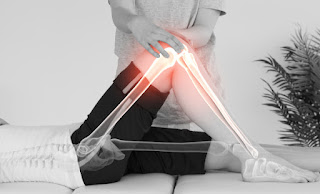Knee Pain During Yoga: Six adjustments to keep your knees safe
If you have knee pain, first of all you will need
to check it out with your Dr. and check that you have the go ahead to practice
yoga. This blog in no way is a substitute
for any medical advice.
Okay medical disclaimer done.
The thing about knee pain during yoga is that you need to be
very vigilant to see if the yoga is causing the pain, or if is highlighting
pain that is already there. There is a big difference. If your knee has already some restrictions, some
injury or tightness, then a Joint Renewal (TM) practice will help highlight those issues. It will bring a
focus and spotlight onto the knee and the knee pain, but in a good way. It will show itself to you more
clearly. Then your practice can help you address
the knee pain in a holistic and healing way.
However, there are
lots of yoga practices that you will need to avoid, because unfortunately they can
actually create more pain, even injure
your knees and I know many people stop practicing yoga because of the damage
they have done to themselves on their mat. As a general rule these practices tend to be taught and sold to you as "fitness."
The Joint Renewal System(TM) has a different approach. It's not about fitness. It's about coherence in your body and mind. It helps you with your knee pain during the
class because you are bringing your mind to the pain, you are becoming more aware of your body. Also the postures are safe and have been designed for safety and to address the modern lifestyle (and reasons why you have knee pain in the first place).
I’ve met many students who have helped their knee pain with this approach, and got their knees in better health. And the irony is that it's not about fixing
anything. We are not specifically focusing on healing this or that. The healing is a consequence of, a by-product
of your whole practice. Of being fully present to your body. The healing
appears because the practice works with the whole system: body and mind and spirit in a
comprehensive, holistic and coherent manner.
Case Study:
I met a student once who had a bicycle accident where she fell off her bike onto the
pavement and smashed her knees. She had
surgery, and was quite immobile after the injury. Gradually over a period of ten years she has
been working with a very specific type of yoga, doing specific postures for her knees and
now she can kneel, squat, move and be mobile in ways that many people her age
(even without any injury) can’t move. She
sat on her knees in Virasana (kneeling
posture) for 15 minutes telling us her story of her knee recovery and then stood up and walked without any effort at all.
When I saw that I was amazed. In my subsequent training in both that type of yoga and adding to that my years of working with Scaravelli Yoga, Breathwork, understanding of oxygenation of the joints, and my studies of Feldenkreis and ABM, I developed my own approach to the knees and started helping my students get amazing results I call it the Joint Renewal System(TM).
So how is it possible for you to deal with knee pain during yoga?
1. Biomechanics
The first adjustment for knee pain during yoga is to make
sure the yoga practice you are doing is biomechanically sound. What do I mean by biomechanics? Basically it's about exploring all the biology and mechanics of free and spacious movement and mobility in the body. The fields of yoga and other movement practices (including Qi Gong) I have adapted into my Joint Renewal System(TM) keep you safe. If you are unsure, then ask
your yoga teacher. If you trust your
teacher and you feel safe with them, let them suggest variations of postures and
movements for you. With any joint, but especially the knees, it
is good to keep it moving in gentle and restorative ways during yoga. If you are straining the knees, putting too much pressure on them, then you risk inflaming the joint even more and you won't have the opportunity to really explore with clarity what and how your knee pain originates.
2. Variety
The second adjustment for knee pain during yoga is to vary
the length of your practice and vary your postures. In this system I have my students using straps and legs out straight, correctly aligning the joints so you can learn to safely extend the back of your knees.
Being in virasana - kneeling - (and all the variations of this kneeling posture) you can learn about the rotation of the knees. In Badha Konasana (soles of the feet together
knees falling to the sides) you can relax the groin which maybe creating a knee
alignment which is causing you pain. By using the standing poses your feet are
repositioned and so your knees are correctly aligned.
The most important thing to remember about knee pain is that
you can’t be sure where it came from. The pain (and even some damage) might well be appearing in the knee, but the knee may be reacting to something in the hip. Or the ankle. It could be as a result of the body compensating (taking more weight or strain) from another restricted part of the body to help you keep moving. Which in the short term is great, but if the original source of the issue is never dealt with properly, the ability to regain full mobility will be compromised.
3. Be open minded
Although in the case study I share above, the student had had an accident
and a very clear and specific knee injury, the origin of your knee pain might
not be so clear. It might be because of
your ankles, the way you walk, your hips, your spine, too much weight you are carrying, it
might be from fallen arches in your feet.
And these situations can arise because of environment, lack of self care
or genetics. This is why the third adjustment to knee pain
during yoga is to be open minded to the source of the pain. Don’t assume you know why the pain is
there. Be curious and allow the body to
show you other parts of itself where the issue can also be corrected. So for example if your ankles start screaming
for attention, put your attention there.
You never know how that may affect your knees.
4. Emotions
The fourth adjustment for the knees is the emotional adjustment.
Consider the language we have around knees – we say we go “weak at the knees” when we are in love or to “bring someone to their knees” meaning we lose our strength. We talk about to "shake at the knees" when we are describing extreme fear. Traditionally marriage is proposed on one
knee. A knight kneels before his king. Our knees are where can be where we experience
humility. Also fear. Think about this language and see what
emotions maybe found in your knees. And then when approaching your yoga practice being
willing to acknowledge any of those emotions that may be stored there. Without making a big story out of them, it’s just
observing, being open to the information and not coming to any
conclusions. Just acknowledge what is
true for you in that moment and be open to see how it changes with your
practice.
5. Props
The fifth adjustment is to make your practice safe by using
props, padding, straps, bolsters correctly.
Sit on a chair for virasana (kneeling position) until you are ready to
take some weight on your knees. You can place your knees to the sides of the
chair. Then if you can come onto your
mat, put weight on all fours. Use your
hands and knees together. Put your knees
on a pad, cushion or rolled up blanket under them. Remember that there maybe some emotions in your
knees, it’s really helpful when you feel safe and secure
in your practice to be able to properly address any emotional and physical knee
pain during yoga.
6. Less is more
The sixth adjustment is to do a little and often. I talk about going to the first
layer of pain or restriction and no further.
In that first layer, right on the edge of your limitation, the “golden
layer” of pain where you can feel it but it’s tolerable and at a level you can
still relax enough to explore and reveal what is happening to your knees. And be an explorer for yourself. What many people do is take what their Dr.
says, lock it in place in their mind, and then avoid that area of the body. I would suggest you do a deep inquiry, a
meditation on the pain in your knees during yoga and see what you can discover. Do your own inquiry. And rather than going to a 90 min class and
putting a lot of pressure on your knees once a week and then forgetting about
them. Go gently, do less (less is more),
come out of postures if they are too much in your class with a teacher, and
then try and practice on your own for 15 minutes every day or every other day.
And for whether it is for pain in the knees, back, hips or shoulders all
these adjustments are relevant – remember a little adjustment over time can
make a huge difference. I personally was suffering from a niggling knee pain that was worsening with time. I was going through menopause and even thought I'd better give up yoga, despite having been a yoga teacher for 20 years.
Luckily I didn't give up and now I dance regularly, still ski every winter and sail in the summers.
Want to read more ? You can download a free copy of The Joint Renewal System Guide here.




Comments
Post a Comment